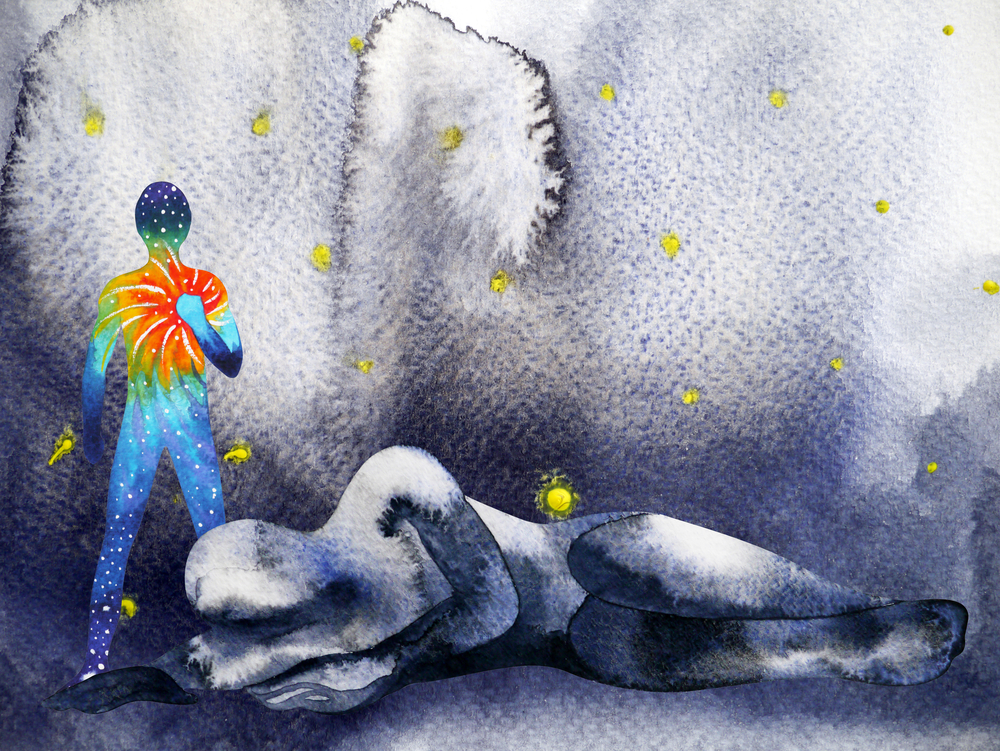In the realm of mental health, the traditional biomedical model categorizes the effects of trauma on the brain as an illness requiring diagnosis. However, Haley Peckham, a researcher at the University of Exeter, argues for a “Neuroplastic Narrative,” which posits that the brain’s ability to change in response to trauma is actually a healthy sign of adaptability, not a pathological problem.
“Many theorists and clinicians assume that abuse and complex trauma affect the developing brain and associated physiological systems in ways that are harmful and lead to abnormalities and psychopathology,” Peckham remarks.
Despite the biomedical model’s pathology-focused responses, she emphasizes, “evolutionary theory, the unifying theory of biological systems, suggests that a pre-emptive assumption of harm and pathology obscures the identification of adaptive mechanisms and forecloses a more nuanced exploration of the effects of trauma and abuse and the causes of psychological suffering.”
 Peckham introduces the ‘Neuroplastic Narrative,’ an innovative approach that views neuroplasticity – the brain’s ability to reorganize and restructure itself – as an evolutionary advantage. According to this narrative, trauma can lead to conditions such as anxiety, not as a pathological response but as a healthy reflection of the brain’s adaptability.
Peckham introduces the ‘Neuroplastic Narrative,’ an innovative approach that views neuroplasticity – the brain’s ability to reorganize and restructure itself – as an evolutionary advantage. According to this narrative, trauma can lead to conditions such as anxiety, not as a pathological response but as a healthy reflection of the brain’s adaptability.
In short, trauma may yield (for instance) anxiety after one’s brain adapts to the effects of a traumatic experience; this is not a bad response to the harm of trauma but an evolved response that represents the brain’s healthy power to change.
Both the trauma-informed Neuroplastic Narrative and the pathology-informed biomedical model attempt to treat people suffering from past adverse experiences. As such, the Neuroplastic Narrative is not intended to indict the current biomedical approach but is offered as an alternative that may resonate for those who want to de-emphasize diagnosis and reduce the potential for iatrogenic harm–suffering brought on by medical treatment.
The Neuroplastic Narrative sees personal experiences as part of a larger evolutionary context, incorporating aspects like personality, behavior, and even epigenetics. Peckham argues that the fundamental premise of the Neuroplastic Narrative is that experiences shape brains. She further elucidates that positive experiences, including therapy, can alleviate or mitigate the effects of negative past experiences.
Trauma being viewed as a part of a bigger picture, rather than as the first domino that leads to mental illness, is what the author means when she says that the Neuroplastic Narrative privileges experience. Lived experiences prepare people for the future; if an experience is traumatic—especially if it occurs at a young age—an individual may come to anticipate future trauma. This is not just something that happens in brain chemistry, nor is it just something that happens in the mind.
Anticipation of future trauma may manifest itself as psychological diagnoses, such as depression or anxiety. However, this does not necessarily mean that psychiatry is the answer for every adverse experience that results in a neurological change. Peckham says, “The fundamental premise of the Neuroplastic Narrative is that experiences shape brains.” She explains that good experiences, including therapy, can heal or mitigate the harmful effects of past experiences.
Healthy relationships founded upon trust and engaging with storytelling that leverages a meaningful narrative are highlighted as methods of healing that concur with the Neuroplastic Narrative view. Just as medications are expected to change brain chemistry through neurotransmitters and hormones, behavioral and social treatments are expected to change minds, and each is expected to heal the other in turn.
Peckham also emphasizes the rarity with which mental illnesses fully and completely satisfyingly fall into the biomedical model. A broken arm will feature an onset injury and can be treated with painkillers, a cast, and setting the bone. Mental illnesses do not tend to have the same strict cause and effect with a straightforward diagnosis and consistently successful treatment method to go with it. Still, there is an expectation that diagnosable mental disorders will meet the criteria within the biomedical model framework.
“People who use services, clinicians, and people with histories of adversity and trauma may value the intuitive appeal of the Neuroplastic Narrative and the formal recognition of what we know to be true—that our experiences shape who and what we are, and become, in the world,” Peckham writes.
“The Neuroplastic Narrative’s premise that experiences shape brains offers compassion retrospectively, for past experiences that have happened and cannot be changed; and hope, prospectively, for new experiences to become embedded mitigating the impact of the earlier harmful experiences, allowing them to be modified, remembered, and therefore anticipated differently. By reclaiming biology but obviating the need to invoke pathology and therefore diagnosis, the Neuroplastic Narrative achieves a non-pathologizing, evolutionarily coherent, biological foundation for trauma-informed approaches in mental health.”
The Neuroplastic Narrative does not aim to replace the biomedical model in mental health care but instead acknowledges the brain’s powerful capacity to adapt in response to traumatic experiences. Although it still requires more research, it represents a promising, non-pathologizing direction for those who want to understand their emotions within an evolutionary and biological context.
****
Peckham, H. (2023). Introducing the Neuroplastic Narrative: A non-pathologizing biological foundation for trauma-informed and adverse childhood experience aware approaches. Frontiers in Psychiatry, 14. https://www.frontiersin.org/articles/10.3389/fpsyt.2023.1103718 (Link)















On numerous occasions, I have made posts on this platform emphasizing that a traumatic childhood encompasses a wide range of experiences and influences one’s personality development. However, I have noticed that many of my posts expressing these ideas are not published due to moderation. One aspect of recovery, if we were to assign it a label, does not necessarily involve traditional healing, but rather entails embracing one’s true self. It involves a radical acceptance of past events and finding ways to utilize the knowledge gained from even the most brutal and violent experiences. I refer to this radical acceptance as realism rather than “making a meaning or some other symbolisms that sort of thwart one off from the reality”, as it is not based on rationalization or sublimation or artistic outcome but one of full acceptance of body and its physiological states call it emotions or feelings as alert system. It entails acknowledging that what happened was wrong in every level but recognizing that the present outcome is not defined by those past events. We have endured and adapted despite undergoing experiences that no child should have to endure.
The mental health approach that often characterizes childhood trauma as broken, pathological, marginalized, and sometimes intertwines economic factors of the past tends to muddle the narrative with psychiatric jargon. It can cause individuals with similar experiences to spiral into a pursuit of becoming who they are “supposed” to be or the untenable idea (the base for psychiatry) that one must be cured or healed by another because apparently, we were hurt by one. This is not true for all. I am not referring to the concept of traumatic growth, although there may be some merit to that idea (which is not reflective of my personal experience). What I have experienced is an astonishing ownership of the events that occurred to me without my consent as a child and leveraging the remnants of those experiences to lead a fulfilling adult life that is not solely defined by past hardships. Furthermore, one often does not require the support and comfort of another individual per se though again this may work for some, but rather a supportive community for going to live in safe space and this is where economic are important not in the past but in the present. Very difficult for one to recover while having traumatic childhood and experiencing present time of hardship economics – this is the ultimate alienation that caused the trauma in the first place. This is where my radical shows: independence for livelihood is the first step and that requires societal acceptance and support to be. And this is coming from someone who is happily married albeit later in life. One needs to feel safe alone to appreciate their inner wisdom and the support of society if one is incapable of doing so themselves!
As an adult, I have discovered solace within my close-knit circle through deep friendships and the cultivation of a culture of safety. However, I must emphasize that I had the autonomy and freedom to pursue this path (the real belief of justice for one’s life to be that). Addressing this complex topic requires open and honest dialogue, rather than resorting solely to medication or pathologizing individuals or getting confused with cultural influence as be it all. Until we engage in meaningful conversations, we will continue to find ourselves caught in a futile cycle of chasing our own tails.
The vacuum of psychiatry is to have safe space in the society and increasing the society’s regulation and acceptance for differences of human emotions. Right now our regulations are so low, a word can set the fire off!
the word on cultural influence and its confusion, I provide this article for further study: https://harpers.org/archive/2021/12/a-posthumous-shock-trauma-studies-modernity-how-everything-became-trauma/
Report comment
There’s only one immune system.
There is a reason stress, injury, and pathogens cause similar symptoms. It is because our bodies have a single immune to system to respond to threats. Much like a fever makes the body inhospitable to bacteria the decreased energy expenditures of depression protect the body against the stress of scarcity.
Report comment
The neuro benefits of a healthy gut microbiome have been known for some time:
Logo of jmf
Journal of Medicinal Food
J Med Food. 2014 Dec 1; 17(12): 1261–1272.
doi: 10.1089/jmf.2014.7000
PMCID: PMC4259177
PMID: 25402818
The Gut Microbiome and the Brain
Leo Galland
Author information Article notes Copyright and License information Disclaimer
Go to:
Abstract
The human gut microbiome impacts human brain health in numerous ways: (1) Structural bacterial components such as lipopolysaccharides provide low-grade tonic stimulation of the innate immune system. Excessive stimulation due to bacterial dysbiosis, small intestinal bacterial overgrowth, or increased intestinal permeability may produce systemic and/or central nervous system inflammation. (2) Bacterial proteins may cross-react with human antigens to stimulate dysfunctional responses of the adaptive immune system. (3) Bacterial enzymes may produce neurotoxic metabolites such as D-lactic acid and ammonia. Even beneficial metabolites such as short-chain fatty acids may exert neurotoxicity. (4) Gut microbes can produce hormones and neurotransmitters that are identical to those produced by humans. Bacterial receptors for these hormones influence microbial growth and virulence. (5) Gut bacteria directly stimulate afferent neurons of the enteric nervous system to send signals to the brain via the vagus nerve. Through these varied mechanisms, gut microbes shape the architecture of sleep and stress reactivity of the hypothalamic-pituitary-adrenal axis. They influence memory, mood, and cognition and are clinically and therapeutically relevant to a range of disorders, including alcoholism, chronic fatigue syndrome, fibromyalgia, and restless legs syndrome. Their role in multiple sclerosis and the neurologic manifestations of celiac disease is being studied. Nutritional tools for altering the gut microbiome therapeutically include changes in diet, probiotics, and prebiotics.
Key Words: : D-lactic acid, endotoxin, microbial endocrinology, microbiome, prebiotics, probiotics, short-chain fatty acids, trimethylamine oxide (TMAO)
Report comment
Once again MiA, in its zeal to avoid over-pathologizing of everyday responses to life, has refused to accept that falls produce broken bones, knives produce severed arteries, and emotional trauma produces damage to the brain and emotionally necrotizing depression and debilitating anxiety which can in no way be construed as positive evolutionary adaptations.
Report comment
One side sees the sky as blue, while the other side sees the sky as periwinkle. But both sides have their heads in the clouds, to one extent or the other.
Report comment
I was expecting something little bit more radical based on promising headline.
To one commenter who was mocking the article: It is not reasonable to compare emotional trauma with something that damages tissues like knife cut or broken bones. Someone not behaving in acceptable way or not feeling well is not in any way a proof of physical damage.
Depression and anxiety can be seen as a body’s safety mechanism to prevent damage. When doing things and thinking starts feeling awful, that is a direct controlling element that forces human to rest even in cases where resting would be socially unacceptable or illegal.
When the anxiety comes from thinking something, but there is no hurting from thinking then it is a motivation to resolve problem and not continue the usual life that would likely end up in early death or not being able to reproduce.
Mania can be seen as a way temporarily do something over the average capacity to survive in harsh environment and similarly psychosis can be seen a way to detect and counter a danger that comes from the environment by temporarily increasing ability to think and make connections. After the safety of environment is back there usually is depression that forces to rest.
There are always those that say that “there is no real danger and it is just delusion that must be treated” but usually they are ignorant and part of that danger the individual is facing. Psychiatric diagnoses are one form of attack that is used world wide in conflicts between people.
I dislike the idea of trauma, because as psychiatric diagnoses it lacks a clear definition and an objective way to spot it.
Body is usually more honest and trustworthy than subjective opinions of humans. For a human it matters a lot that everyone works and there are no freeloaders. As an end result everyone not being able to do work or hurting others is considered ill or lazy. That is a big limitation for a human ability to understand reality for the reality lacks all the moral qualities that people use in order to force other people.
For a body only things that matter are survival and producing offsprings that survive and reproduce. Therefore it often does things that are in conflict with laws and personal wishes and even more it does things conflicts with the wishes of other people in community.
Report comment
The “Neuroplastic Narrative” makes a lot more sense, than the “biomedical model.” But that comes from one whose therapist finally confessed to me, as I was picking up her medical records, that she believed that distress caused by 9.11.2001 – right after that distressing event – was distress caused by a “chemical imbalance” in my brain alone. How insane!
But I will say, if psychology and psychiatry actually want to help trauma survivors, they should be able to honestly bill to help child abuse survivors, which they currently can NOT do.
https://www.psychologytoday.com/us/blog/your-child-does-not-have-bipolar-disorder/201402/dsm-5-and-child-neglect-and-abuse-1
And this inability to honestly bill to help child abuse survivors has resulted in a whole lot of “victim blaming,” not to mention lots and lots of psychological and psychiatric malpractice, against child abuse survivors, and their legitimately concerned parents.
https://www.madinamerica.com/2016/04/heal-for-life/
https://www.indybay.org/newsitems/2019/01/23/18820633.php?fbclid=IwAR2-cgZPcEvbz7yFqMuUwneIuaqGleGiOzackY4N2sPeVXolwmEga5iKxdo
But “the dirty little secret of the two original educated professions” does die hard. Let’s hope and pray, the doctors, pastors, and corrupted bishops will some day get out of the child abuse covering up business, since that business is illegal – albeit highly profitable for the “two original educated professions.”
https://books.google.com/books?id=xI01AlxH1uAC&printsec=frontcover&source=gbs_ge_summary_r&cad=0#v=onepage&q&f=false
Report comment
Hi Donna,
you might enjoy the whole paper – where it is clear that adaptiveness for survival is not without suffering, no one here is interested in glossing over the lived experiences of the consequences of trauma
Bridget
Report comment